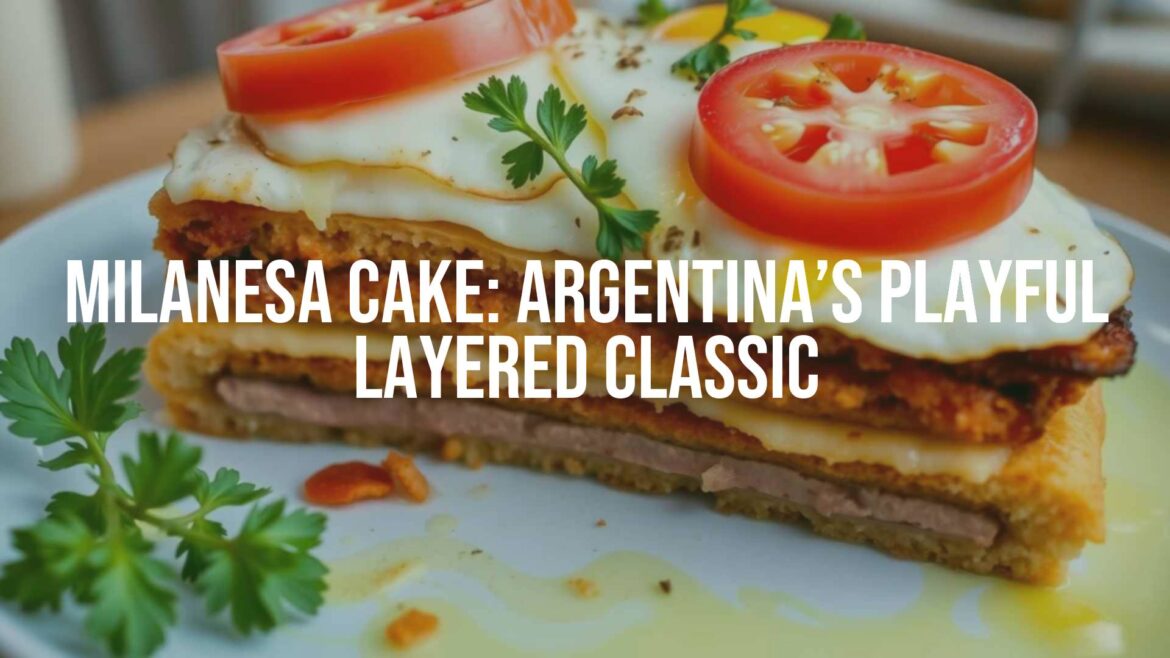The Unconventional Delight: Argentina’s Milanesa Cake
Argentina is celebrated for its inventive takes on comfort food, and few dishes capture this playful spirit better than the milanesa cake—known locally as torta de milanesa. While it may not have the venerable history of other Argentine staples, the milanesa cake is a beloved modern classic that elevates a familiar favorite to new, festive heights. This eye-catching dish layers crispy breaded cutlets with bold toppings, creating both visual impact and remarkable flavor.
What Is a Milanesa Cake?
At its heart, a milanesa cake is a creative assembly of ingredients inspired by the iconic milanesa—breadcrumb-coated beef (or sometimes chicken) cutlets fried to golden perfection. Rather than serving the cutlets individually, several are stacked in layers, often separated and crowned with an array of toppings such as ham, cheese, fresh tomatoes, fried eggs, lettuce, or even roasted peppers. Some versions use sauces like salsa golf or Provençal, and the entire tower may be garnished for visual and culinary flair.
Origins and Cultural Role
The concept of the milanesa cake arose in recent decades, born of Argentineans’ love for milanesa and a flair for celebration. Though its exact origins are difficult to trace, it gained traction in urban eateries and home kitchens as a whimsical dish for birthdays, parties, and social gatherings. The milanesa cake quickly found a following among young people and families, who appreciated its blend of familiar flavors and playful presentation. Its construction makes it ideal for sharing, reinforcing the strong communal aspect of Argentine dining culture.
A Showstopper at Gatherings
One of the key functions of the milanesa cake is as a centerpiece at get-togethers, where it ‘wows’ guests before being portioned out. Much like traditional cakes, it is sliced into wedges, each piece delivering a satisfying combination of comforting breaded meat and vibrant toppings. The spectacle and abundance embody the Argentine spirit of hospitality and festivity.
Regional and Personal Variations
While the classic milanesa cake consists of beef cutlets, other interpretations use chicken or even vegetarian versions based on eggplant or soy. In some areas, the layers are interspersed with roasted vegetables or unique sauces reflecting regional tastes. The customizable nature of the dish means every family or restaurant might put their own spin on the construction, toppings, and overall height—sometimes producing towering creations that defy easy classification as either a main dish or a party snack.
Frequently Asked Questions and Fun Facts
Is the milanesa cake a traditional Argentine dish? Not in the historical sense, but it has earned a loyal following for its innovation and festive qualities.
How is it typically served? It’s customarily sliced and enjoyed with friends or family, often accompanied by potato salad, fries, or simple greens.
What makes it unique? The dramatic, layered presentation and opportunity for endless customization make the milanesa cake a symbol of modern Argentine conviviality and culinary creativity.
Whether served at a birthday or a casual gathering, the milanesa cake stands as a delicious testament to Argentina’s ongoing culinary evolution. With every crispy, flavorful slice, it invites a sense of celebration and togetherness.


